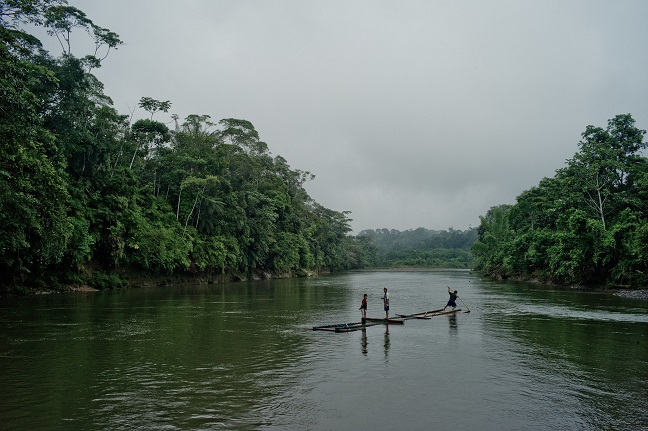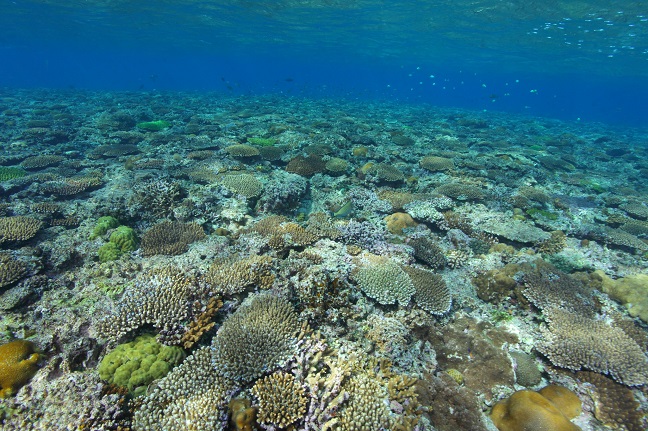Claire Bracegirdle is an ESRC-funded doctoral student researching the governance of community-based approaches to conservation in Ghana. Her research seeks to better understand the dynamic interplay between pre-existing community institutions and newly introduced institutions of natural resource governance through two case studies of community-based conservation projects, conducted in collaboration with the Nature Conservation Research Centre.
Recent research is pointing to the fact that our fears of a sixth mass extinction event are not theoretical – it is already underway. It is clear that the approaches we have been taking to protect and conserve nature have been insufficient to avoid widespread biodiversity loss. Meanwhile, awareness of the social and cultural costs of mainstream approaches to conservation – such as the creation and policing of protected areas that separate people from their ancestral territories – is increasing. Late last year, for example, the long-awaited independent review into WWF’s human rights abuses concluded that the organisation demonstrated a lack of accountability in relation to killings, torture, sexual and physical violence and intimidation of Indigenous peoples and local communities connected with its initiatives.
So, with all this in mind: what will be the future of conservation, and how can it change to better support people and nature? As part of the Forum for Global Challenges and the University of Birmingham’s International Development Department Guest Seminar Series, we brought together four researchers exploring possible answers to these questions. This blog highlights three ideas that emerged from the discussion: the necessity of addressing hegemonic power as a first step; the importance of shifting focus away from distant, remote engagements to long-term, local ones; and the need to prioritise reciprocity and care in our relationships with the non-human world.
1. Address hegemonic power
Bram Büscher from Wageningen University, CONVIVA and co-author of The Conservation Revolution: Radical Ideas for Saving Nature Beyond the Anthropocene highlighted how the amount of land held under protected areas has increased significantly in recent years. Decontextualised, this could be seen as a success story for conservation – but perhaps is just a success story for compartmentalisation, given that there has been an exponential increase in biodiversity loss during the same time period. Professor Büscher argued that while conservation practice has historically focussed on frantically mopping the floor, the starting point must be turning off the taps: we must immediately halt activities that harm nature, a feat that will be impossible to achieve without addressing – and confronting – hegemonic power.

June Rubis from the University of Sydney and the ICCA Consortium highlighted how global imbalances of power are apparent in the historic marginalisation of Indigenous peoples and local communities (IPLCs), who are responsible for protecting most of the world’s biodiversity. Dr Rubis noted that IPLCs hold 50% of the world’s land under customary tenure systems and that 31% of the world is already protected if the lands conserved by IPLCs are counted. However, a very small proportion of these lands and territories are protected with secure land rights; indeed, far from being supported, many IPLCs face considerable backlash when defending their lands and territories from the continued expansion of agribusiness and the extractive industries.
2. Move from distant to local engagements
Anne Claus from American University and author of Drawing the Sea Near: Satoumi and Coral Reef Conservation in Okinawa explained how mainstream approaches to conservation have emphasised the distance between nature and people. Through this approach, conservation becomes spectacle; nature is something to see from a distance, not something to touch or taste. In contrast, the residents of Okinawa – an archipelago off Japan with a complicated history of colonisation – emphasise other sensory engagements with the sea which closely connect people to the landscape. For example, clams are a highly valued food for local people who plant them in the nearby coral reefs, creating satoumi or cultivated seascapes. Dr Claus described how a newly-created WWF field office in Okinawa was unsuccessful in gaining local support for its coral reef conservation efforts until it foregrounded local approaches – like satoumi – in its work.
3. Prioritise reciprocity and care
Bas Verschuuren from Wageningen University, the IUCN-WCPA Specialist Group: Cultural and Spiritual Values of Protected Areas and the Sacred Natural Sites Initiative argued that ‘conservation’ – understood as the work done by mainstream, transnational organisations like WWF – is an anomaly. Instead, he explained, conservation could better be understood as the ordinary, day-to-day relationships of reciprocity and care that form the backbone of humanity’s engagements with nature. These are exemplified in the diverse cultural and spiritual ways people engage with places; Dr Verschuuren highlighted several examples, including the sacred groves in Ghana which provide medicinal plants for nearby people, and act as biodiversity storehouses for local ecosystems.

Furthermore, as Dr Claus explained, conservation should not be oriented around the paternalistic protection of non-humans, but rather a “spirit of collaboration and curiosity that promotes socio-natural vitality.” Similarly, Dr Rubis – drawing on her research on human-orangutan (maias) engagements – outlined how Iban people in Sarawak emphasise reciprocity and co-learning between human and non-human species. Through a system of naming maias that has been overlooked by conservation, Iban people “know maias beyond the need to protect, but rather to connect” in ways that maintain long term relations.
Conclusion
As Professor Büscher noted, our current trajectory – at the planetary scale – is very far from sustainable. Later this year, meetings of the Convention on Biological Diversity and the UN Framework Convention on Climate Change could provide opportunities for change. It is clear, however, that conservation policy and practice must prioritise different approaches: ones that confront hegemonic power rather than perpetuating business-as-usual; that stop the romanticisation of wilderness as devoid of human life, and that centre conservation initiatives within deep, long-lasting, reciprocal relationships of care.


